Twilight dawns. The sun fades into the depths of the horizon and soon the sky veils a dark curtain littered with thousands of stars. The Milky Way rises along the southeast horizon, with all its stars and nebulae shimmering in glorious display of celestial glamour. From summer triangle stars Altair, Deneb, and Vega dominating the northern sky to winter triangle stars Sirius, Betelgeuse and Procyon, along with peaking meteor showers, the wonders of the night sky are an amazing sight for stargazers all year round.
Rather, these wonders used to be an amazing sight all year round. Most people these days rarely take the time to gaze at the night sky, unfortunately; and when they do, depending on their proximity to a city, it may be difficult to witness or even discern any celestial beauty. If you were to step outside your home tonight and study the sky, what would you be able to see?
Perhaps the blaze of the city lights would obscure your vision or perhaps you would need to venture quite far to a dark sky site.
You are not alone. According to the New global atlas of light pollution, produced by scientists at ISTIL – Light Pollution Science and Technology Institute, in 2016, 80% of the globe and more than 99% of the US and EU population live under artificial skyglow. Skyglow is the luminance of the night sky arising from celestial light sources such as stars, moonlight, and zodiacal light in its pristine form; but this natural lighting has been constantly altered with an increase in artificial light scattered throughout the atmosphere. This phenomenon is more commonly referred to as Light Pollution.
The artificially lit surface of the earth is increasing in its luminance and extent at night, as people spend more active time past dark outside the home—especially in urban settings. Light pollution threatens our planet’s ecosystem by disrupting the light and dark patterns of the natural world. The effects of light pollution are felt not only by humans but they also have a significant impact on wildlife. Moths and other nocturnal insects rely on celestial sources such as the moon and stars to find their way. But artificial lighting sends them astray. The insect population has been declining due to increasing use of LED streetlights, according to the field research conducted by Butterfly Conservation.
In short, artificial light is an environmental pollutant.
The city of Los Angeles is drenched in bright lights that emit an intense sky glow, also known as the bright halo, that appears over urban areas at night due to light pollution. Los Angeles ranks 5th among U.S. cities with the highest percentage of people sleeping less than 7 hours a night. The more nighttime activity among people, the greater demand for light and energy sources.
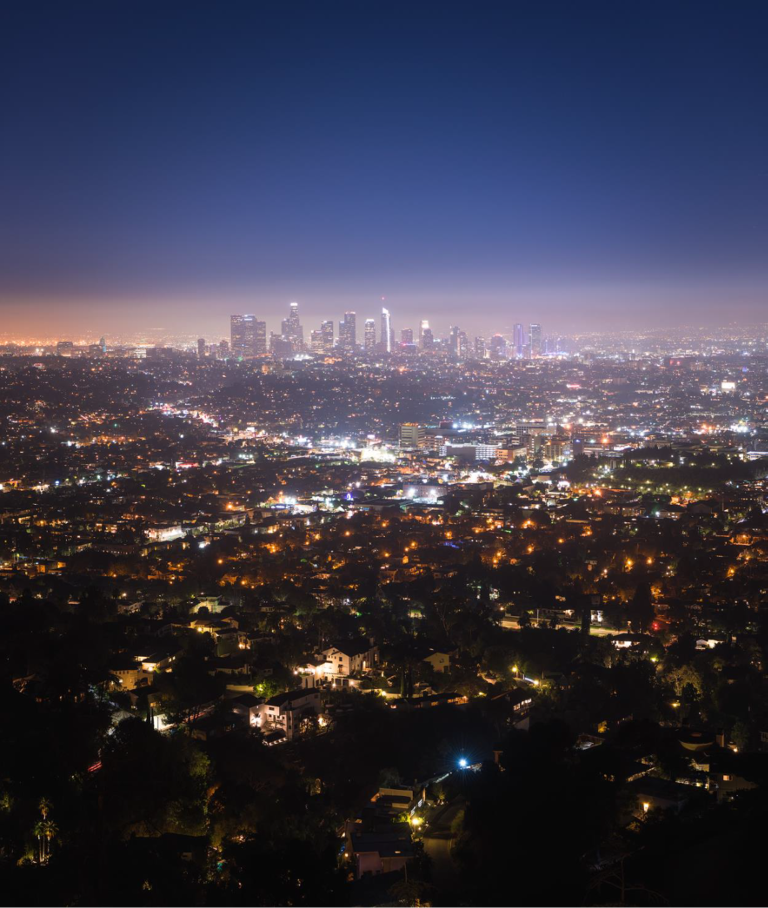 Skyglow over the city of Los Angeles as seen from Griffith Observatory. © Prashant Naik
Skyglow over the city of Los Angeles as seen from Griffith Observatory. © Prashant Naik
The University of Exeter conducted a research by examining the light emissions from 1992 to 2017 and found that global light pollution has rapidly increased by at least 49% over those 25 years.
“The global spread of artificial light is eroding the natural night-time environment,” says Dr. Alejandro Sánchez de Miguel.
As a photographer, I have come to appreciate the beauty of a city’s skyline as it reminds me of all the incredible creations of mankind. Skyscrapers are getting taller and brighter. The laser beams from party towns are projected straight into the sky. The blink in the sky is no more of the stars but of the airplanes or SpaceX star-link satellites. All this has made us forget how the night sky looks unless we go far away from the city lights. Even then, there’s light pollution from space debris and satellites that might scatter light back into the atmosphere, according to a new analysis published in monthly notices of Royal Astronomy Society.
“As space gets more crowded, the magnitude of this effect will only be more, not less,” says John Barentine, director of public policy at the International Dark-Sky Association.
One could only imagine the starry night sky view over a major city’s skyline.
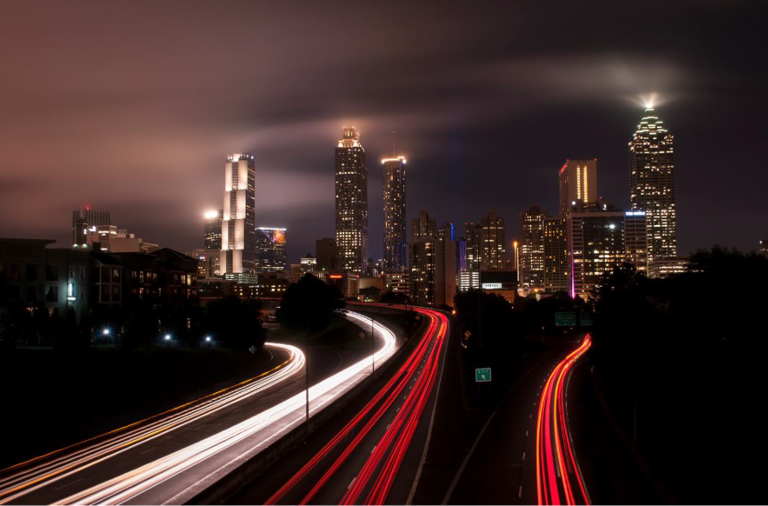 Atlanta Skyline, Georgia. © Prashant Naik
Atlanta Skyline, Georgia. © Prashant Naik
As cities expand, the light pollution has spread to the remote wilderness areas, disrupting the dark and light patterns of our natural world. Light pollution can be seen from hundreds of miles away, and it even reaches protected areas such as nature preserves and national parks. The visibility of the Milky Way significantly reduces with the increase in sky brightness.
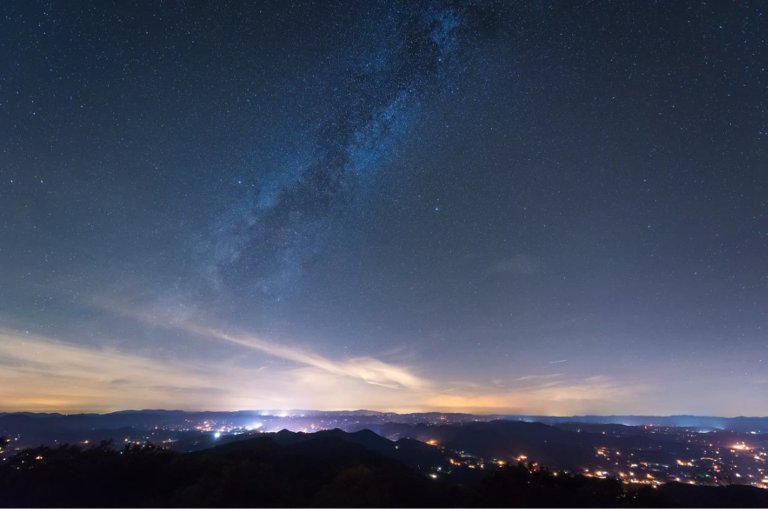
Reduced milky way visibility due to light pollution – Brasstown Bald Observatory, Georgia. © Prashant Naik
For example, we all enjoy fireworks as a symbol of celebration. But as a society we do not seem to care about the significant amount of air pollution they released into the atmosphere. Light pollution caused by fireworks can affect the wake and sleep patterns of wildlife. Even though short lived, the toxins released by conventional fireworks can have detrimental effects, direct or indirect, such as acid rain, and have been linked to climate change as well.
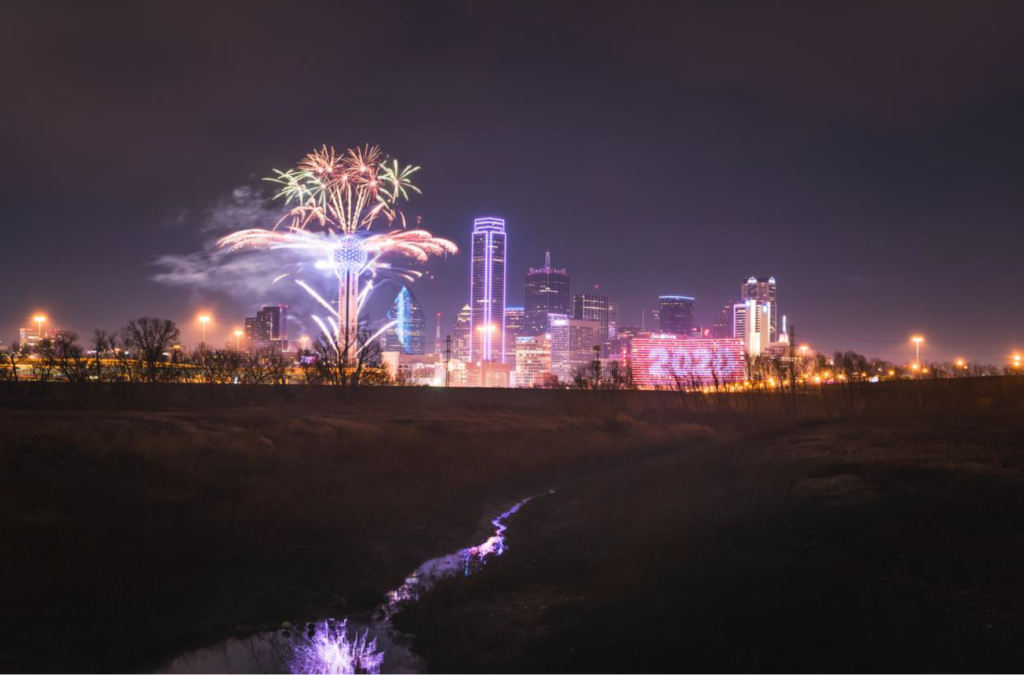 New Year’s Eve fireworks display at Dallas, Texas. © Prashant Naik
New Year’s Eve fireworks display at Dallas, Texas. © Prashant Naik
All the light we can see:
But there is hope in the Dark! Light pollution, unlike air and water pollution, is completely reversible.
“We don’t have to wait for generations to see change, and countless wildlife hang in the balance,” says Ruskin Hartley, Executive Director, IDA.
In the area where light pollution is little to none, the wonders of the night sky can be spectacular. The Milky Way can be seen with the naked eye in bright colors with luminous stars against the dark sky. The graceful arch of the Milky Way, a white hazy band of light, rises in all its glory in a dazzling display of cosmic radiance.
The below image was taken at Balanced Rock in Arches National Part in 2019, the same year the park was designated as an International Dark Sky place.
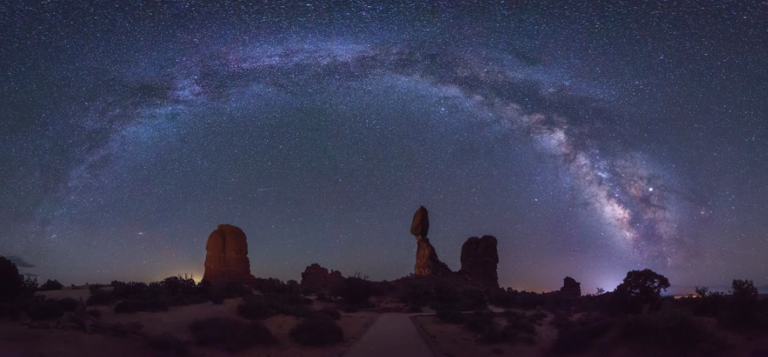
© Prashant Naik
Grand Canyon National Park attained its International Dark Sky Park status in 2019. Walking the trails along the rim of the Grand Canyon, several hours after the sun goes down, is an unforgettable experience. The wonders of the cosmic world – the mysteries of the moon, stars, and Milky Way galaxy can evoke a sense of serenity, and limitless expanse of the universe. The act of gazing at the sky is also one of the basic forms of human connection, transcending time and distance.
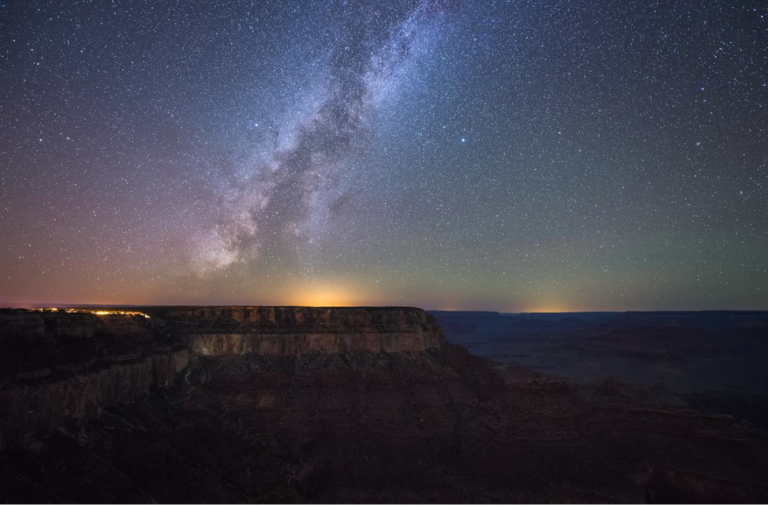
© Prashant Naik
The 6-mile long road into Zion Canyon also offers amazing views of the night sky and the dream of pristine nighttime experience comes true at Zion National Park in Utah. This wouldn’t have been possible without the park’s effort to preserve the night skies through the support of local government agencies and conservation groups.
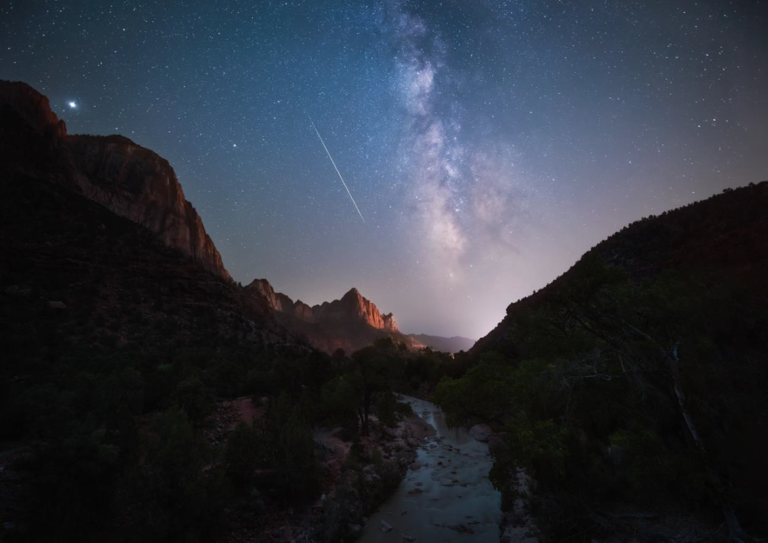 © Prashant Naik
© Prashant Naik
Death Valley National Park, the largest national park in the contiguous United States, gets a lot of recognition for being a light pollution free, dark sky park. The Night sky there is surreal. More than 93% of the park is a designated wilderness area and for all the species of plants and animals adapted to the desert climate, star lights are the guiding light. However, lights from Las Vegas and Pahrump, Nevada, situated within 100-mile radius of Death Valley, could still impact desert nightlife.
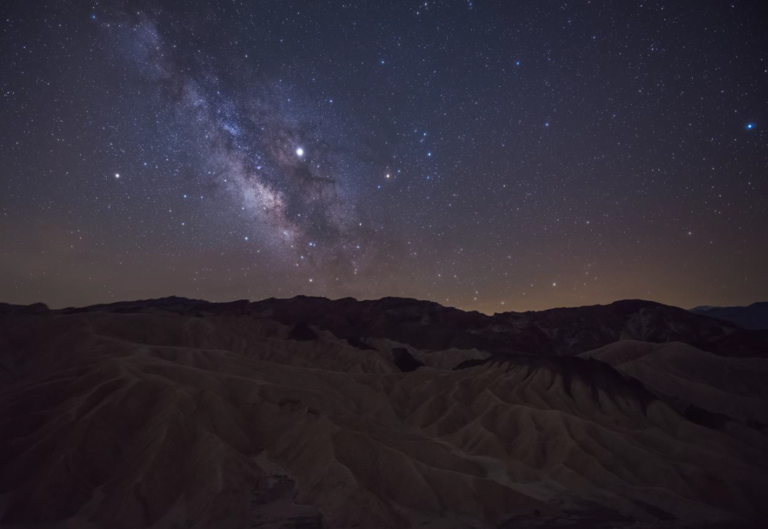 © Prashant Naik
© Prashant Naik
The list of National Parks certified as IDA-designated International Dark sky Parks and sanctuaries is growing. IDA recognizes these places for having exceptional quality of starry nights and nocturnal environments. The work done by IDA, and many environmental activists around the globe, promises to preserve the night skies for all future generations. As communities become aware of the detrimental effects of light pollution, actions can be taken to mitigate and even reverse it.
The beauty of the night sky isn’t the only reason to protect dark skies. Reducing light pollution also aims for decreased energy consumption. It all contributes towards our long-term goal of saving the planet.
The dream of having a true night sky experience in your own backyard could be a reality someday!




